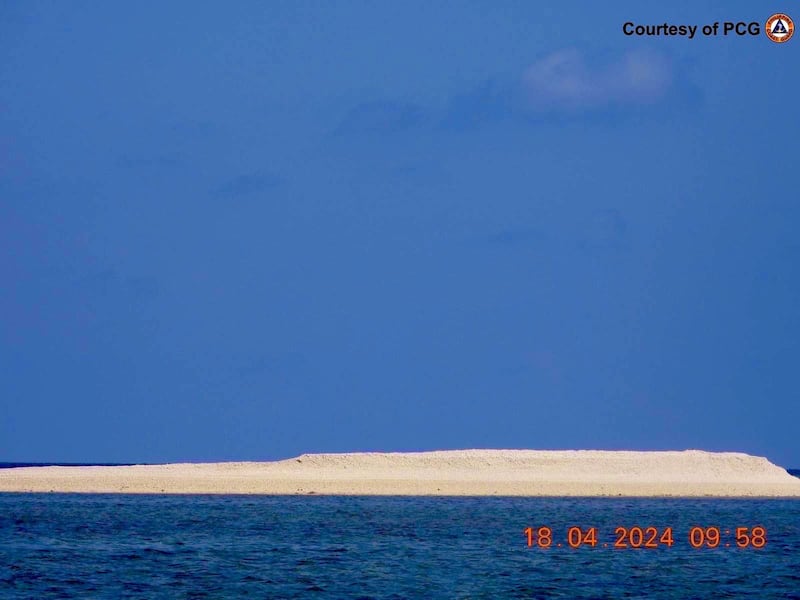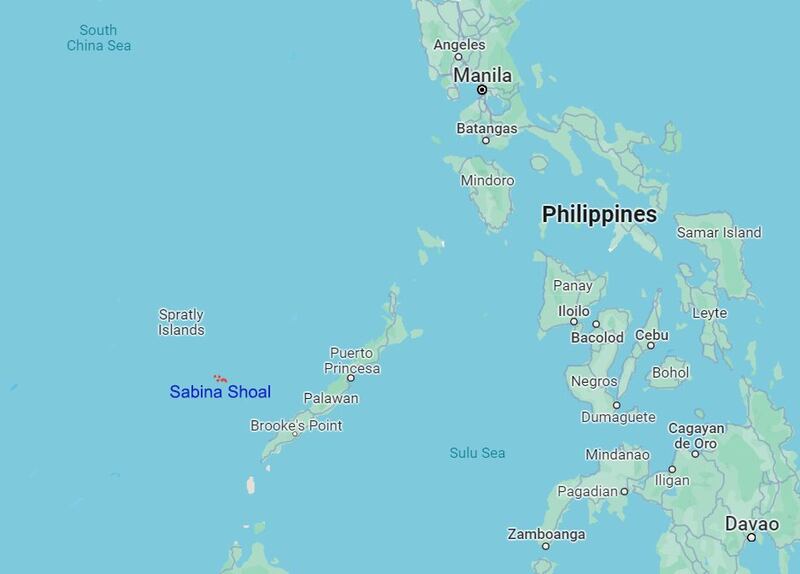The Philippine coast guard has sent ships to monitor what Manila suspects to be China’s illegal island building in the South China Sea, the Presidential Office said.
The office of President Ferdinand Marcos Jr. said in a statement that since April, the coast guard vessel BRP Teresa Magbanua had been operating near Sabina Shoal, known in the Philippines as Escoda Shoal, to keep a watch on China's "supposed illegal activities."
Sabina Shoal is a low-tide elevation in the Spratly Islands, well inside the Philippines’ exclusive economic zone (EEZ) but also claimed by China, Taiwan and Vietnam. It is only 75 nautical miles (140km) from the Philippine island of Palawan.
An EEZ gives the coastal state exclusive access to natural resources in the waters and in the seabed.
Philippine coast guard spokesman Jay Tarriela said in the statement that crushed corals had been dumped on the reef – an indication of land reclamation. However, the suspected island building appeared to be at an initial stage, he said.
Tarriela also said that besides the BRP Teresa Magbanua, two more coast guard vessels had been deployed on a rotating basis to monitor the area.
“We are alarmed by this,” said Jonathan Malaya, assistant director general of the Philippine National Security Council.
Malaya told a press conference on Monday that similar “crushed corals” were detected earlier on Sandy Cay, another group of low-lying reefs near Philippines-occupied Thitu island, also known as Pag-asa island.
“These were crushed corals and it was obvious that they came from another place,” Malaya said.

The Philippines in March launched a scientific research mission on Sandy Cay, prompting China to protest.
Beijing has yet to respond to the latest allegations regarding Sabina Shoal.
Monitoring procedure
Tarriela explained in a post on the social platform X, formerly Twitter, that the Philippine coast guard had implemented a "standard operating procedure" to inspect Sabina Shoal for any dumped crushed corals.
After more than three weeks of monitoring, the coast guard discovered that “crushed corals were dumped and it is highly likely that the maritime features were altered.” The force has released some photo evidence of the damaged corals.
“We must stay vigilant and not lose sight of the illegal activities and aggressive behavior exhibited by China in Escoda (Sabina) Shoal,” Tarriela wrote in his post.
“Not only does this pose a threat to our sovereignty, but it also causes significant damage to our marine environment,” the coast guard spokesman wrote.

In a report released last December, the Asia Maritime Transparency Initiative (AMTI) and the China Ocean Institute – both based in the United States – said that competing states in the South China Sea had caused "the largest active man-made reef destruction in human history."
The organizations named China as the most egregious actor by far, having wiped out roughly 4,648 acres (19km2) of reefs in four years between 2013 and 2017. Most destruction was due to dredging and landfill to construct infrastructure on artificial islands.
Beijing carried out most of its island building activities during that period and by 2022 had fully militarized the three largest reefs – Subi, Mischief and Fiery Cross.
Jason Gutierrez in Manila contributed to this report.
Edited by Mike Firn.
